[ad_1]
With SmallRig’s multitude of tools and support gear, you’d probably have a lot of expectations for their tripod. Let’s see what this carbon fiber travel tripod has to offer.
SmallRig has been one of the go-to brands in recent years for accessories that offer expanded functionality, compatibility, and reliable durability for both photography and videography gear. The brand has constantly been one of the first to make customized fit camera cages and L-brackets for newly released gear that expand or improve how we use them with other tools and support gear. From tripods to gimbals, to attaching batteries and storage to a camera “rig,” their products have offered a good variety of reliable tools in recent years.
In addition to small tools and cages, SmallRig recently released their own photo and video tripods to make their support gear ecosystem more encompassing. For photographers and videographers who have been using and have been helped by the feature-filled tools that the brand has, there must be some expectations that we would all want to see in these new products.
The SmallRig AP-20: Build and Design
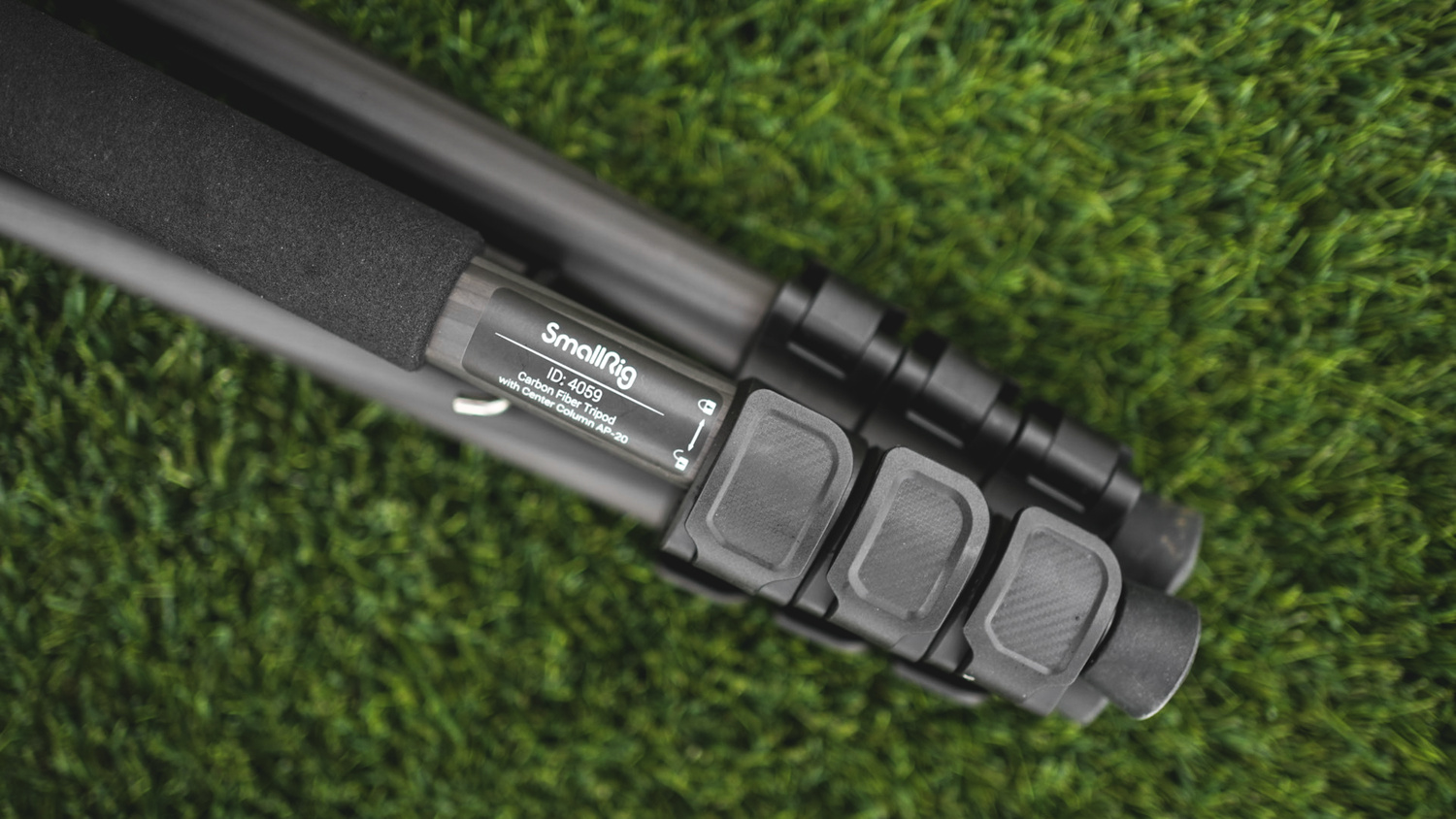
The SmallRig AP-20 is the version of their carbon fiber travel tripod that comes with a center column, which makes it very slightly heavier than the version without the center column. The carbon fiber rods have a diameter of 25 mm on the most proximal section that, of course, tapers as you go further down. These sections are connected by hard plastic flip-locks that are topped off with a carbon fiber layer for aesthetic purposes. Currently, there is no option for twist-locks and also no option other than the four-section version.

The central joint is connected to the legs by a lock mechanism that you press to unlock and abduct the legs upwards, allowing them to fold down to a much shorter folded length of 17 inches. This function is pretty much what makes it portable, and in addition to the light overall weight of 1.2 kilograms, makes it worthy of being called a travel tripod.
On one side of the central joint, you can find a single 3/4 inch thread that allows you to use and attach other accessories such as friction arms or smartphone holders onto the tripod. There could have definitely been more ports like these for more options, but this particular model only has one of them.
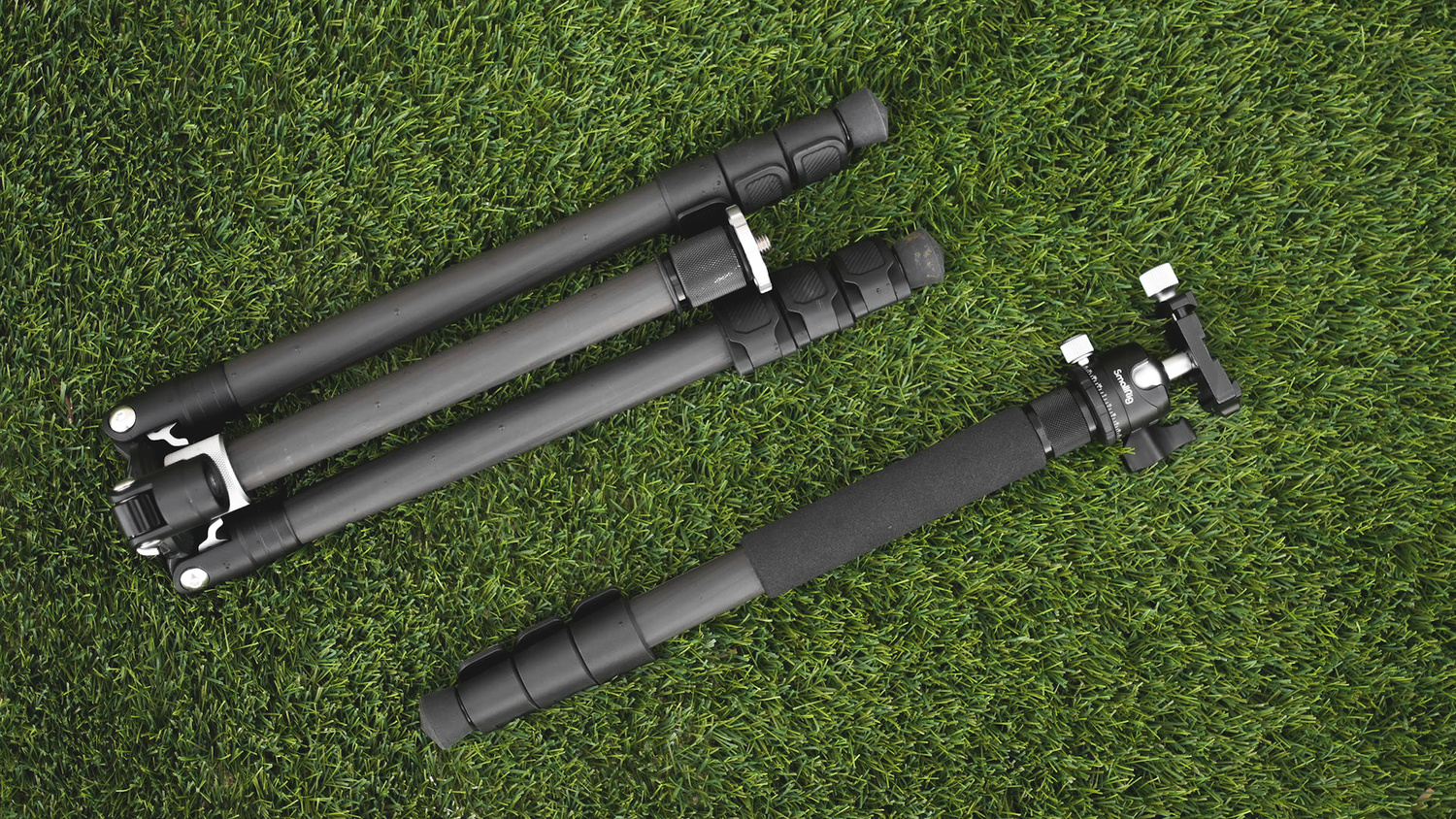
Another feature of this tripod is the fact that one out of the three legs can be detached entirely and connected independently to the ball head (whether the included one or another head of your choice). This allows the user to have the option of having a lightweight carbon fiber monopod for whatever reason they may have. The supplied ball-head is rather compact at just about 2.5 x 4 inches in size and seems proportionately small compared to the entire tripod. However, it does provide good friction that can considerably hold the payload even in unusual angles.
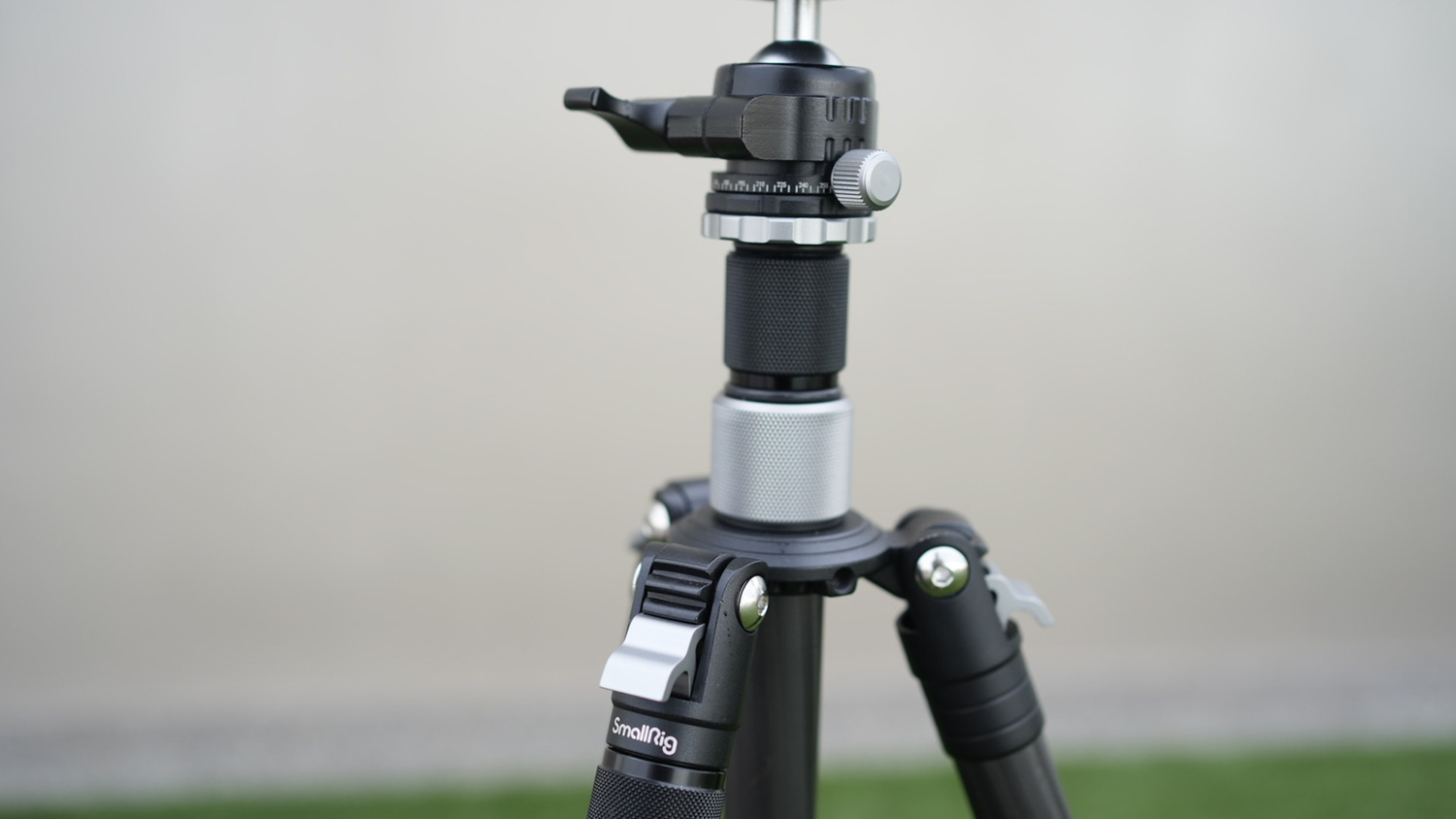
The AP-20 carbon fiber tripod’s center column has two twist-lock mechanisms. The lower and larger lock unlocks the main center column rod that elevates the entire column. The smaller twist-lock on top of the first releases another layer of this telescopic rod, giving the center column two sections and virtually double the height. With the center column fully extended, however, there is significant wiggle room due to the elevated center of gravity, which may not be ideal for avoiding camera shake, especially in windy situations.
Weighing just 1.2 kilograms, this travel tripod can carry up to 10 kilograms of gear. When fully extended without the center column, the tripod goes up to 46 inches, 54 inches with the main section of the center column extended, and 63 inches with both sections extended.
Functionality
The SmallRig AP-20 carbon fiber travel tripod definitely fits the role of a lightweight travel companion. The 10-kilogram payload is very easily carried by the tripod in ideal situations. Testing out the legs individually, the flip locks provide considerable friction against significant weight. I personally use tripods as trekking poles, putting some body weight on them in rugged terrain, and seeing that the tripod’s legs don’t retract throughout the hike shows how well it can carry your gear. The central joint offers three angle levels that allow you to have them wide open; however, you can only go as low as the center column would allow. It is safe to assume that the version of this tripod, the SmallRig AP-10 can go on much lower angles because of the lack of a center column.

The central joint also has one slot for additional accessories through the screw-in thread. However, seeing all the space on that surface and knowing all the tools that the brand has to offer, there could have definitely been more options included.
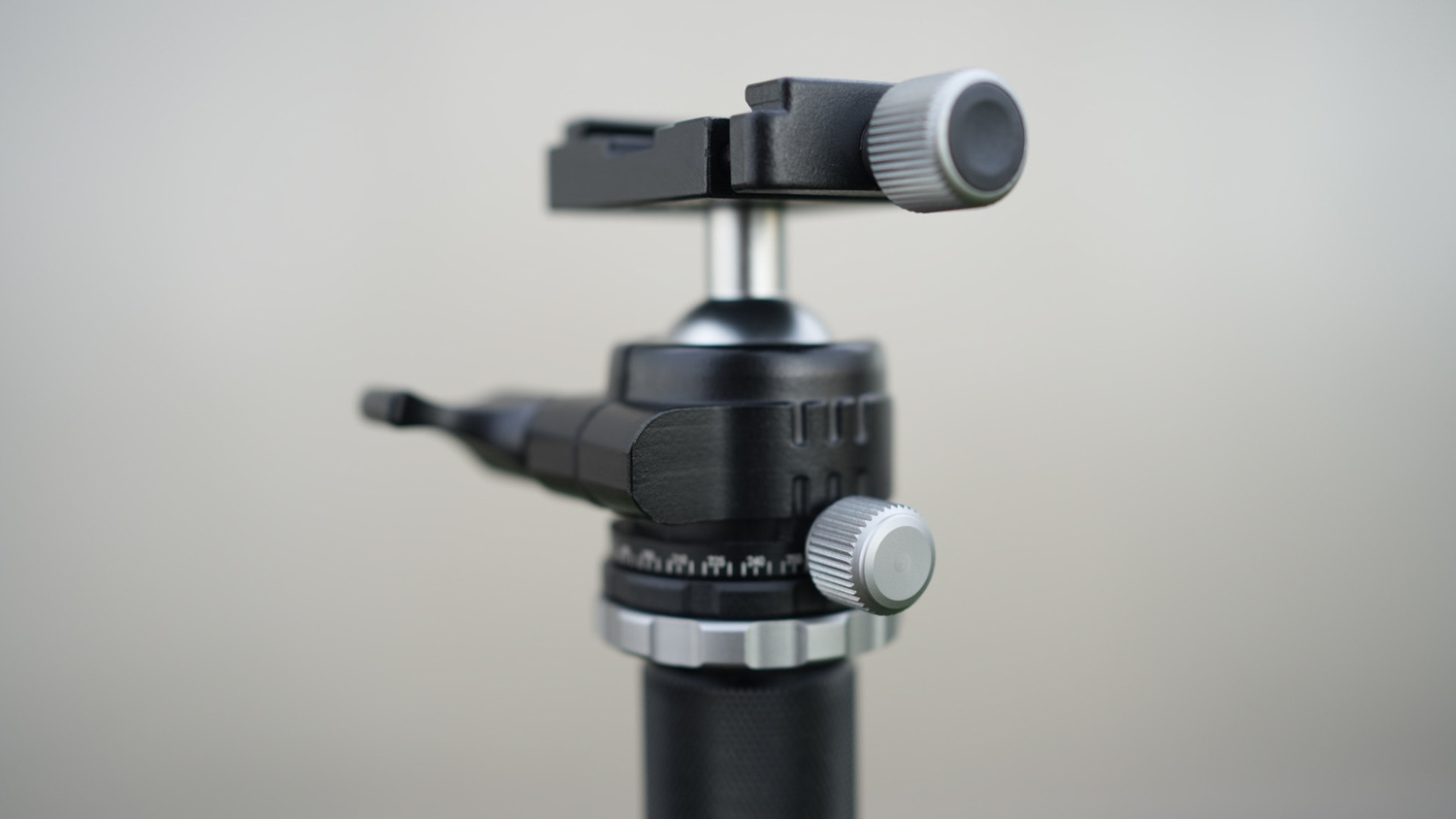
While the ball-head does exactly what it is supposed to do and holds a significant load of gear, in addition to the fact that the size of the head seems disproportionate to the body of the tripod, the pan-release knob seems rather small and could perhaps provide a better tactile experience if given a bit more width.
Conclusion
The SmallRig AP-20 is definitely a travel tripod that one can consider, especially since it comes for a relatively friendly price of $149. It is a reliable piece of support gear that can hold its own out in the field and performs entirely the functions of a portable tripod ideal for travel and outdoor photography.
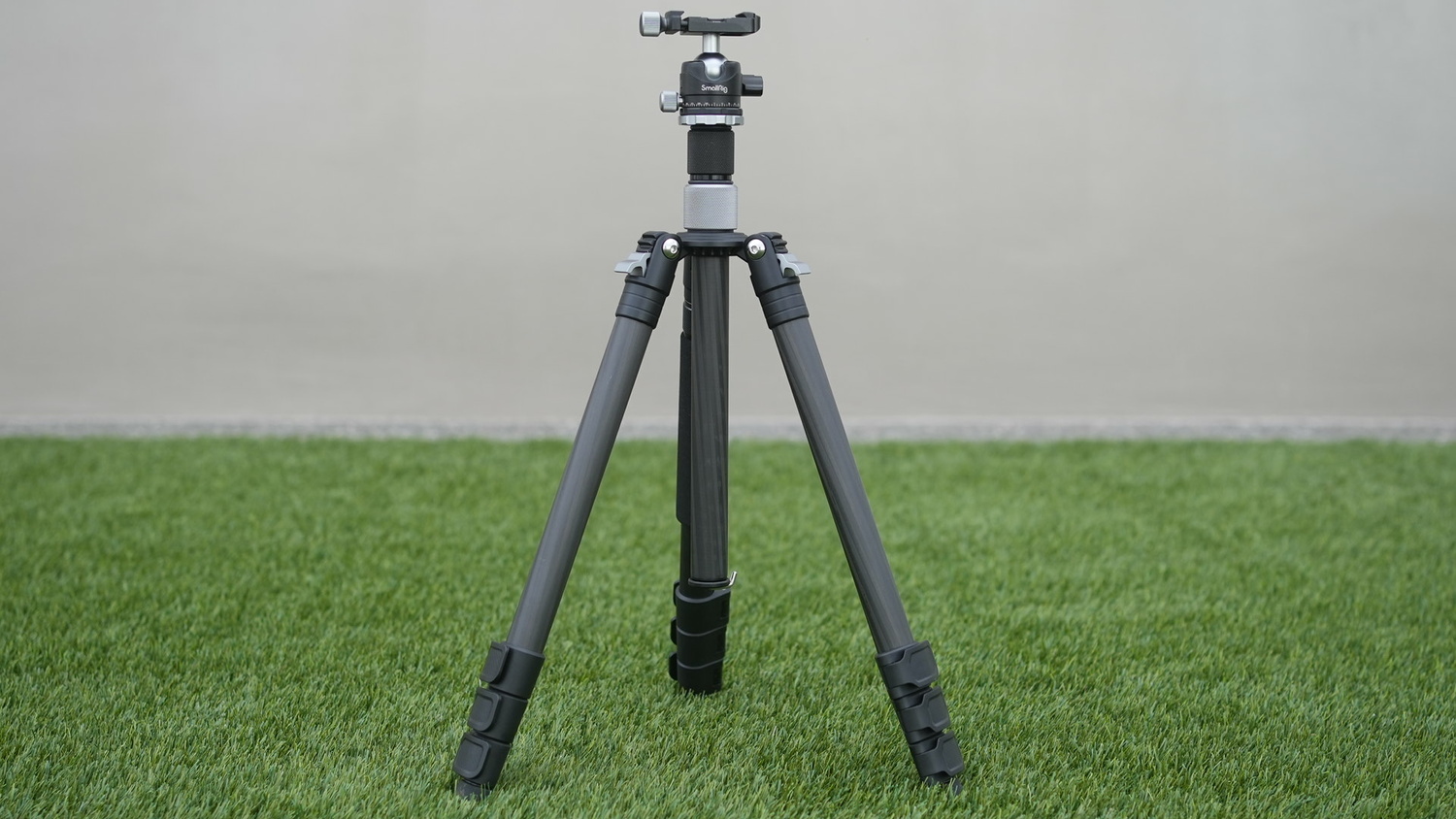
However, looking at the bigger picture with regards to the ecosystem of products and tools that SmallRig offers, I do believe that so much more could have been put into this tripod. Considering that SmallRig makes accessories for mounting almost anything onto your camera or onto other support gear, a tripod which is an integral component of any camera gear setup has so much more potential for compatibility features and modular options. In my personal opinion, there is definitely room for a more premium tripod that would cost a bit more but would offer more possibilities for building a “rig” around it regardless of what genre or style the user prefers.
What I Liked
- Compact and lightweight
- Significant payload
- Monopod option
- Affordable price
What Can Be Improved
- No option to remove the center column to convert to a low-angle tripod
- More mounting and modularity functions can be added to match other SmallRig tools
[ad_2]
Original Source Link